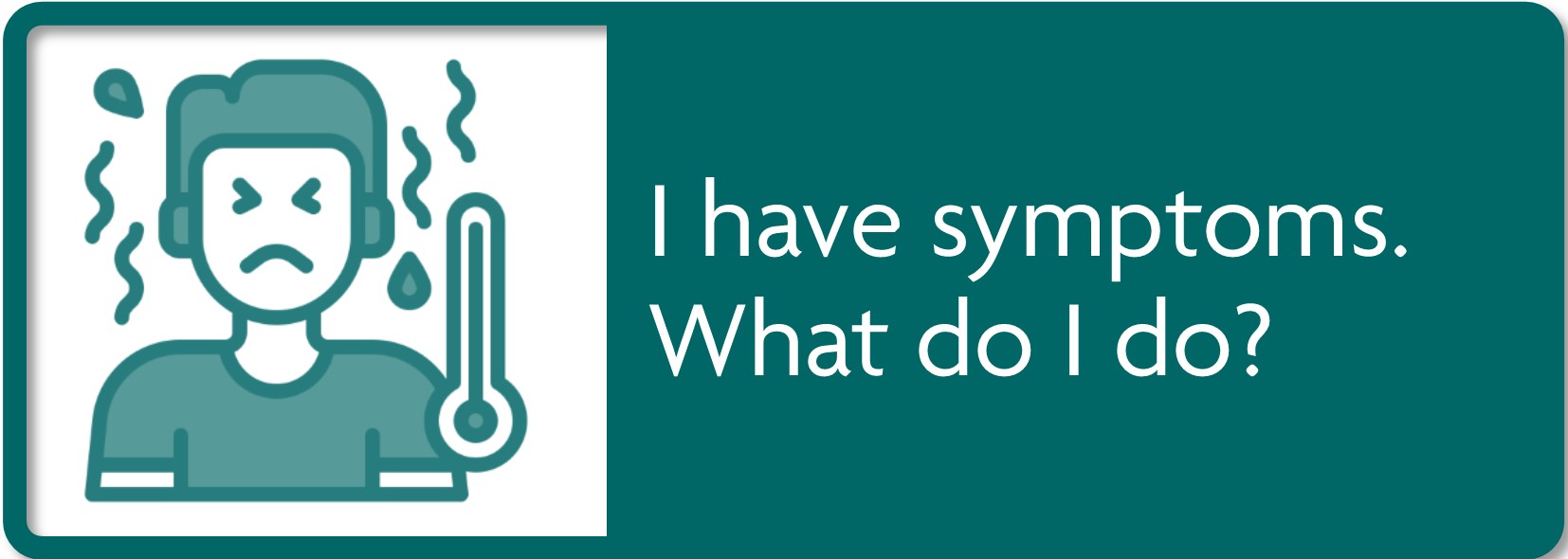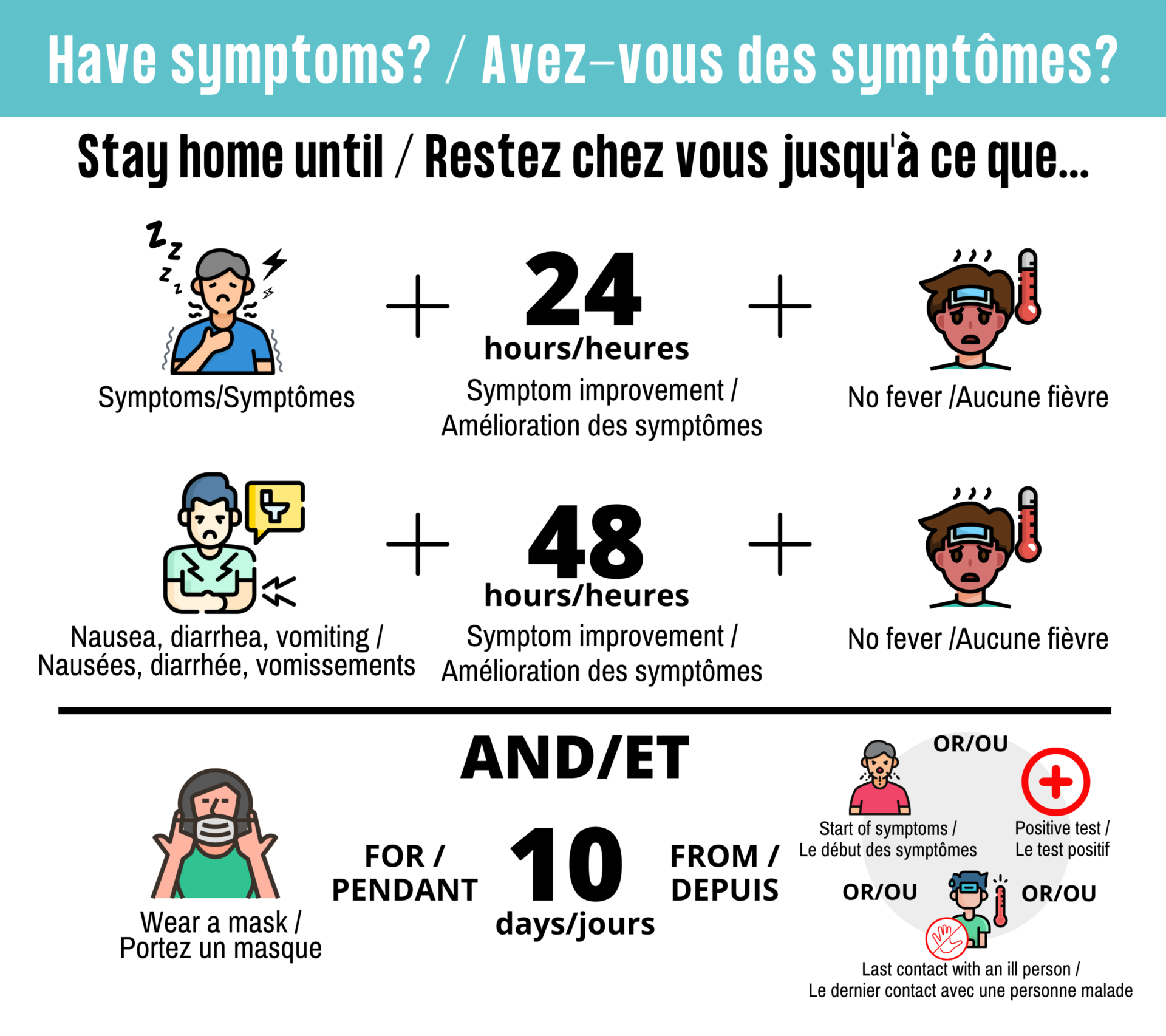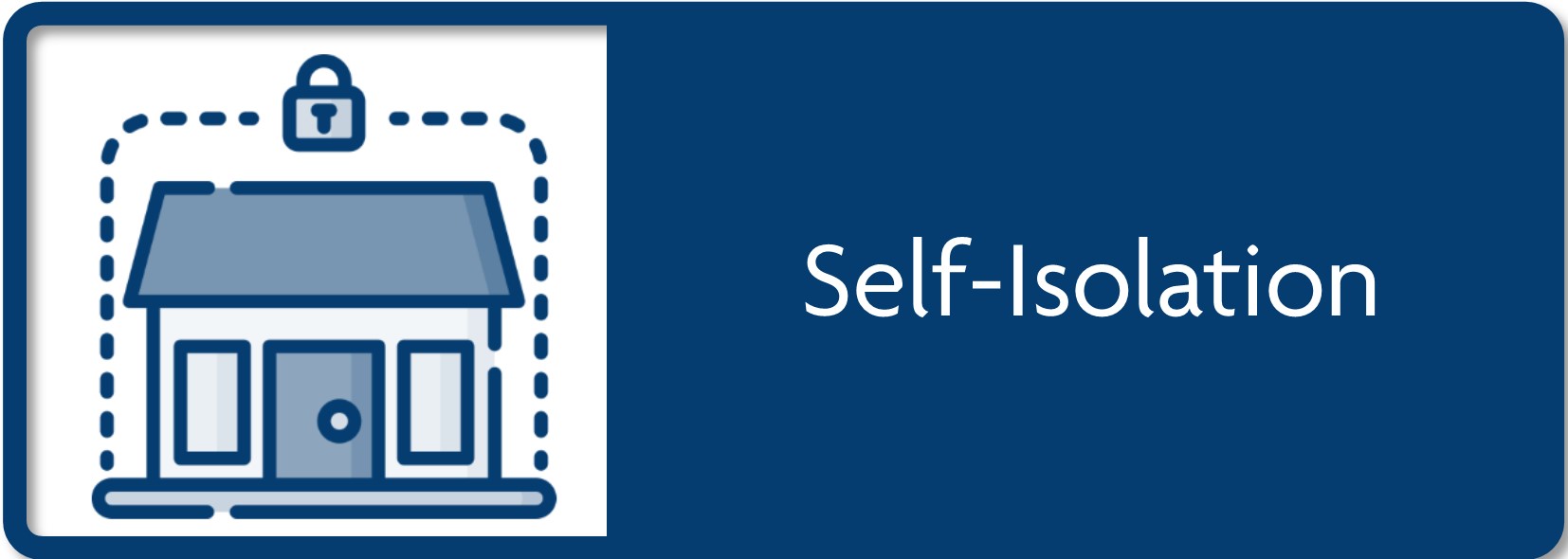
On this page:

If you require more information on what to do if you or someone you know have symptoms, have tested positive, or have been exposed to COVID-19. Please visit: https://www.ontario.ca/page/covid-19-testing-and-treatment
If you or someone you know is experiencing COVID-19 symptoms and need a recommendation on what to do next, please visit https://www.ontario.ca/self-assessment to use the self-assessment tool.

What are symptoms of COVID-19?
Regardless of whether you are fully vaccinated, stay home and self-isolate if you have symptoms of COVID-19:
Any one of:
- Fever, chills
- Cough (new or worsening)
- Shortness of breath
- Decrease or loss of sense of smell or taste
OR any two of:
- Sore throat
- Headache
- Extreme fatigue
- Runny nose/nasal congestion
- Muscle aches/joint pain
- Nausea, vomiting, diarrhea
Click here for details about how to self-isolate.
Symptoms range from mild – like the flu and other common respiratory infections – to severe. You can also take the COVID-19
self-assessment to know whether you need to stay home
and self-isolate. In addition to self-isolating, you should tell your workplace that you are ill.
How long should I self-isolate?
If you have symptoms:
Under self-isolation guidance, if you have symptoms, you should self-isolate until you have no fever and your symptoms have been improving for 24 hours (or 48 hours for nausea, diarrhea, or vomiting). This will reduce the spread of COVID-19 and other respiratory and gastrointestinal illnesses.
You should take additional precautions until day 10 from the start of your symptoms.
If you have tested positive but you do not have symptoms:
Self-isolation is not required. You should take additional precautions until day 10 from your positive test:
- Wear a well-fitted mask in all indoor public settings (including work, school, and childcare).
- Avoid activities where mask removal would be necessary, including dining out and practicing/playing sports where masking cannot be maintained.
- Do not visit anyone who is at higher risk of illness, such as seniors. Note that some disabilities are invisible, and do not assume that others are low risk.
- Avoid non-essential visits to highest risk settings. Highest risk settings are hospitals (including paramedic services), home and community care, congregate living, long term care and retirement homes, First Nation elder care lodges, group homes, shelters, hospices, correctional institutions, Provincial Demonstration schools, and hospital schools. Please contact a specific organization if you have questions about their policy.
If you are immunocompromised and you have symptoms or have tested positive:
Self-isolate for 10 days from the start of your symptoms or your positive test, whichever came first. After 10 days, only leave self-isolation if you have no fever and your symptoms have been improving for 24 hours (or 48 hours for nausea, diarrhea, or vomiting).
What should the people who live with me do?
The people who live with you do not need to self-isolate unless they have symptoms. However, everyone you live with should take these precautions for 10 days from their last contact (unmasked and closer than 2 metres) with the ill person:
- Wear a well-fitted mask in indoor public settings (including work, school, and childcare).
- Avoid activities where mask removal would be necessary, including dining out and practicing/playing sports where masking cannot be maintained.
- Do not visit anyone who is at higher risk of illness, such as seniors. Note that some disabilities are invisible, and do not assume that others are low risk.
- Avoid non-essential visits to highest risk settings. Highest risk settings are hospitals (including paramedic services), home and community care, congregate living, long term care and retirement homes, First Nation elder care lodges, group homes, shelters, hospices, correctional institutions, Provincial Demonstration schools, and hospital schools. Please contact a specific organization if you have questions about their policy.
If I get COVID-19, is there a medication that I can take?
Most people who get COVID-19 can recover at home without treatment. People who are sick enough to go to hospital will be given medications to help them recover. For people who are at higher risk of serious illness, medications are available that can help prevent them from needing to be cared for in hospital.
Medications to treat COVID-19 are for people who are at higher risk of getting seriously ill. That’s because the research on these medications was generally done on people who were at higher risk of serious illness. If you have COVID-19, speak to your healthcare provider right away to discuss whether you are eligible and make a plan about how to quickly access these medications if you become ill. It’s important to begin treatment within 5 days of symptom onset for the best effect. You can also visit the COVID-19 treatment screener to know whether you are eligible. Note that the eligibility criteria for medications differs from the eligibility criteria for COVID-19 testing at Assessment Centres. More information, including locations in Timiskaming where treatment is available, is found on the Government of Ontario website.
Where can I get a COVID-19 test?
For a list of testing options, click here.
Only certain individuals now qualify for an Assessment Centre test, and there are a limited number of rapid antigen tests available. If you have symptoms and you cannot get tested, you should assume that you have COVID-19.
20240729/kp:nd